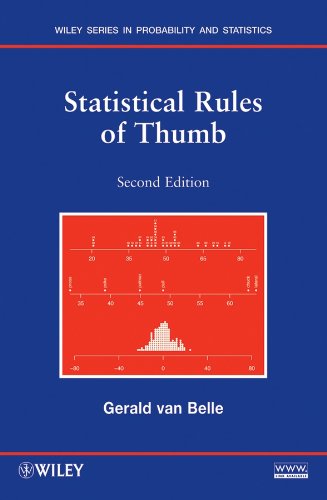Statistical rules of thumb ebook
Par clement james le lundi, juillet 11 2016, 23:01 - Lien permanent
Statistical rules of thumb by Gerald van Belle


Download eBook
Statistical rules of thumb Gerald van Belle ebook
ISBN: 0470144483, 9780470144480
Publisher: Wiley
Page: 305
Format: pdf
Good deckbuilders inherently "get" without thinking about it. You will build an instinctive inference that is more powerful than conventional statistics. With five minutes to speak to the publishers of many of the top science journals, I tried to distill the lessons learned about scientists and social media to a short set of “rules of thumb.” I was not surprised at all when the panel of scientists at the end of the day .. I've had a recent discovery that I think is worth sharing; nearly all the creatures in winning aggressive (aggro) decks seem to follow this general rule for success: . Available for free in the App Store. 8x5: A Rule of Thumb for Aggressive Creatures · wcmille's picture. Taleb's rules of thumb on trader risk management, which I have quoted in full below. By: wcmille, Wayne Miller Mar 01 2013 11: to understand aggressive decks and what makes them tick. 6- Never let a day go by without studying the changes in the prices of all available trading instruments. My fascination with his ideas led me to DerivativesStrategy.com which published Mr. Thinking about a statistical threshold in regards to why it works is helpful. MLB Average/Rule of thumb: .290-.300 depending on the year. Statistical Rules Of Thumb, part III: Always Visualize the Data http://abbottanalytics.blogspot.com/2011/11/statistical-rules-of-thumb-part-iii.html. This workshop will use iNZight visualisation tools and other simulation activities to build a conceptual understanding of margin of error, and the “rules of thumb” for testing claims in statistically-based reports. 7- The greatest inferential mistake: "This event never happens in my market. --- Sent from Zite personalized magazine iPad app. I won't argue the specific merits of the Berkeley study with you, statistical analysis of sociological studies is not my area of expertise. You'll need to be able to compute probabilities of Type I and II errors, obviously What most people call statistical discrimination is just the application of rules of thumb, based on little or no data. That's really high, probably unsustainably high, and he probably regresses statistically in 2013).